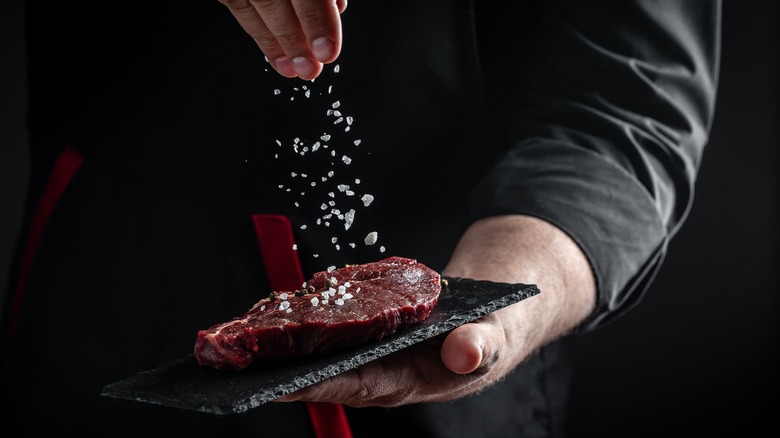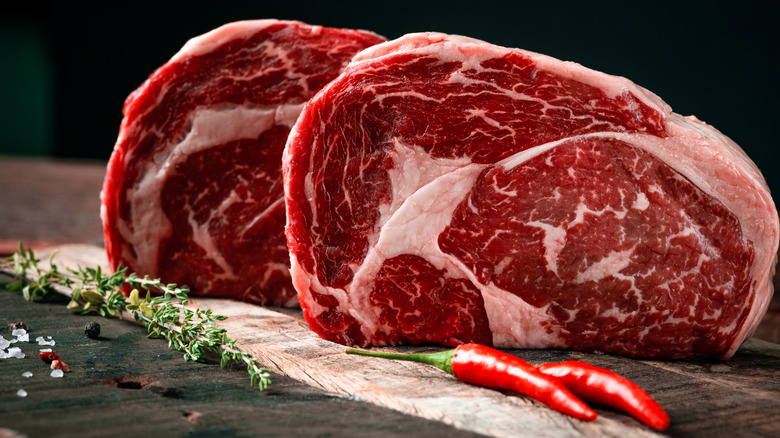Why You Should Consider Fat Content Before Salting Steak
There's no meat more prized and talked about by meat lovers than steak. There's something primal to mastering the art of searing a juicy cut of beef, and also a surprising number of ways to screw it up.
One huge mistake would be to forget to salt your steak. Salt has a wonderful power to bring out an ingredient's best flavors, and steak is no different (via New York Times). According to Serious Eats, it also has major benefits for cooking as well. Besides enhancing the natural flavors present, the salt also reconstitutes any of the juices that it draws out. This creates a perfectly seared final product that is full of flavor.
Properly salting though can be difficult. The goal is not to make the steak taste salty, but to use salt to draw out the steak flavor. This might take more salt than you'd expect. You don't have to be a steakhouse caliber chef though to figure out what the right proportions are for any cut of meat.
Fat can dull other flavors
Size and weight are important qualities to keep in mind when deciding how much salt to use, per America's Test Kitchen. The more meat you have, the more salt you'll need to ensure that all of it is properly seasoned and coated. One quality that you also need to keep in mind though is the fat content.
Usually with meat, more fat means more flavor. Especially when it comes to marbled fat that is worked in between the fibers. According to Bull and Bourbon Steakhouse, marbling will yield a more tender and juicy steak because the fat renders and distributes evenly while the meat is cooked.
America's Test Kitchen reports that fat also has a bad habit though. Too much fat can dull our palates to other flavors that are present in the meat. Cook's Illustrated found that 80% lean ground needed up to 1% of its weight in salt to get the most flavor from it. 90% lean beef, on the other hand, fared better with 0.75%. Leaner meats like pork loin and turkey required even less salt. The easiest way to solve this is to take the amount of fat on your steak into account when you decide how much to salt it.
America's Test Kitchen notes that this isn't just for pre-seasoning meat either. It can be helpful to rely on a finishing salt to make sure that you've used enough salt for your steak as well.

